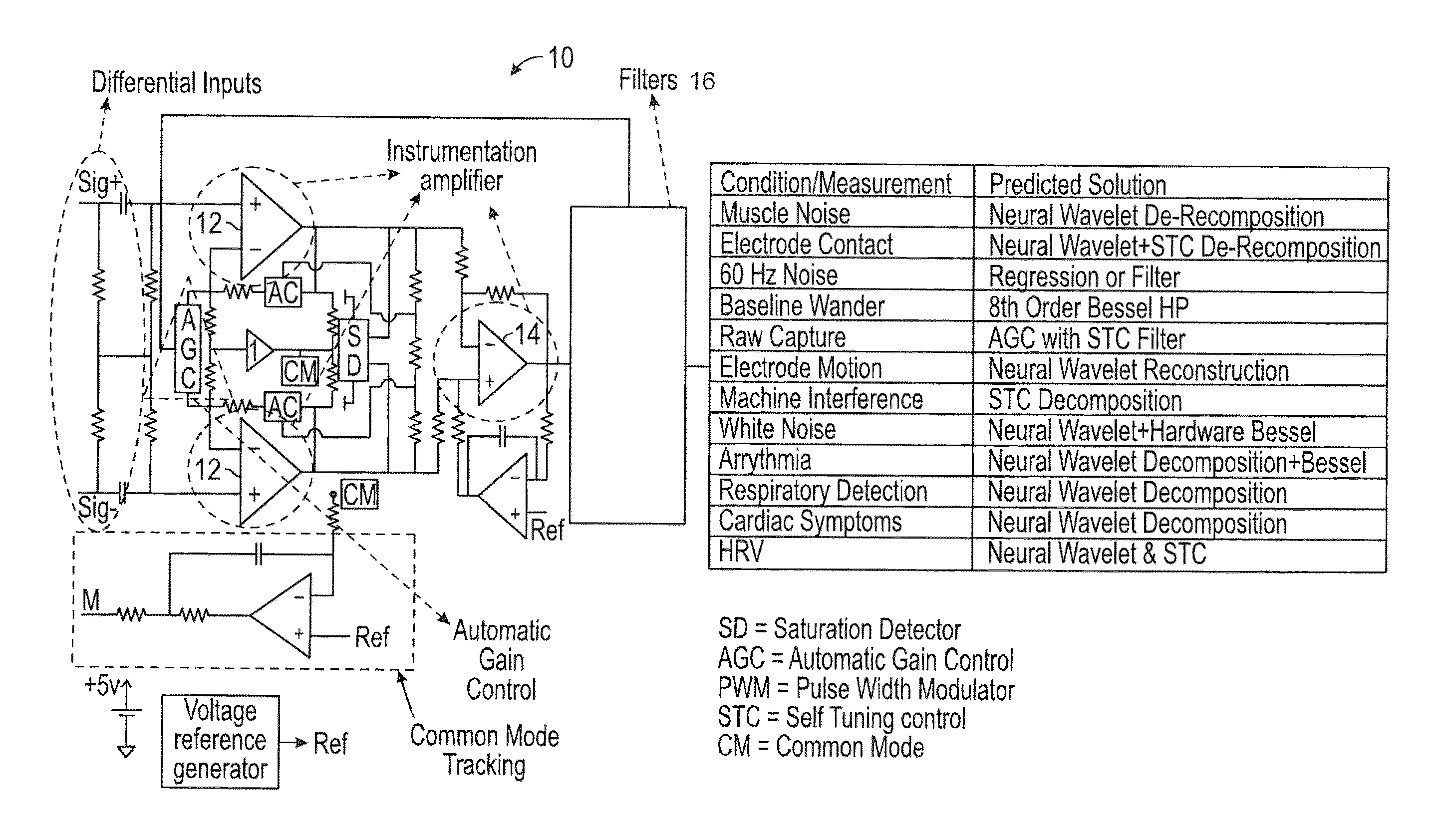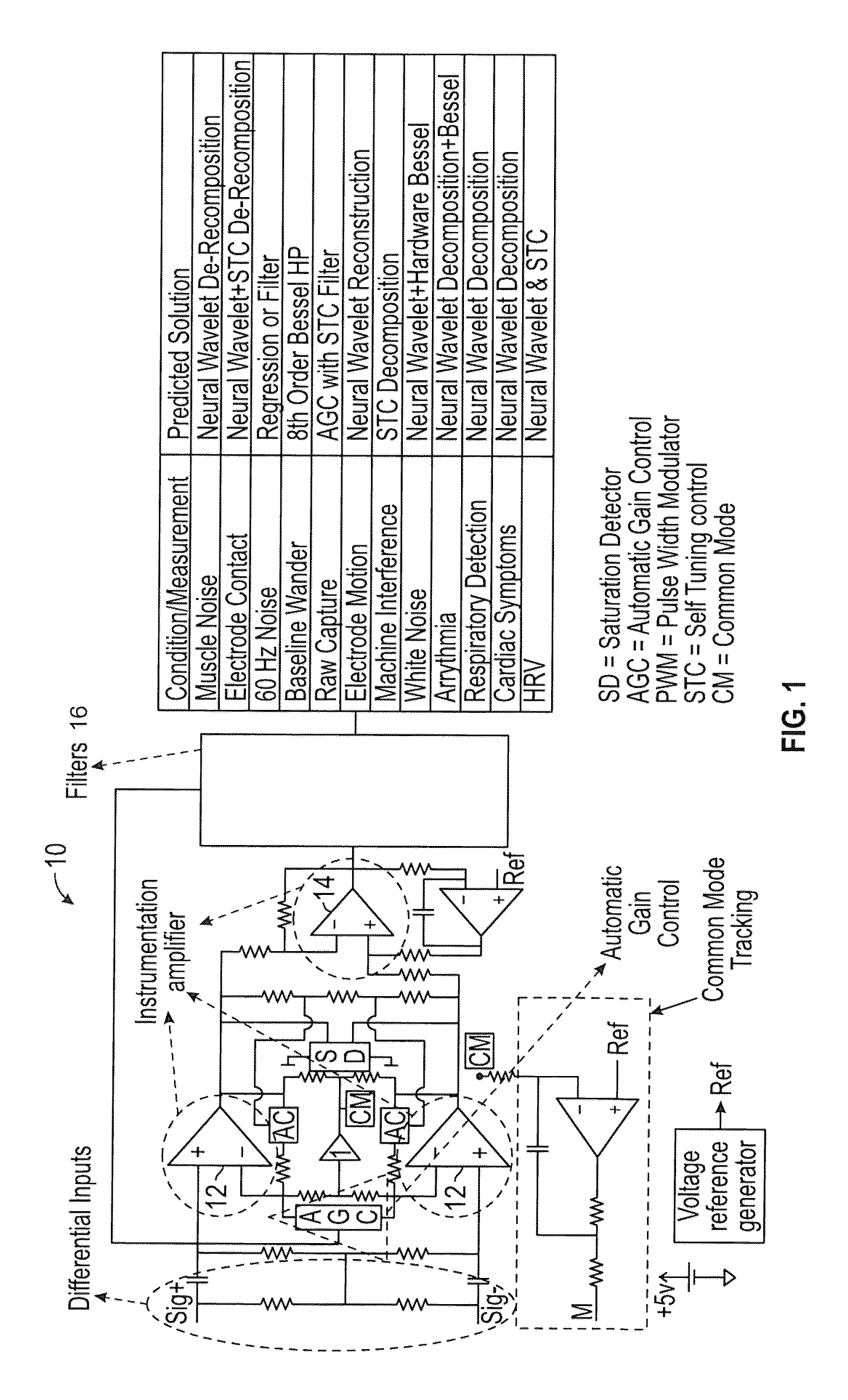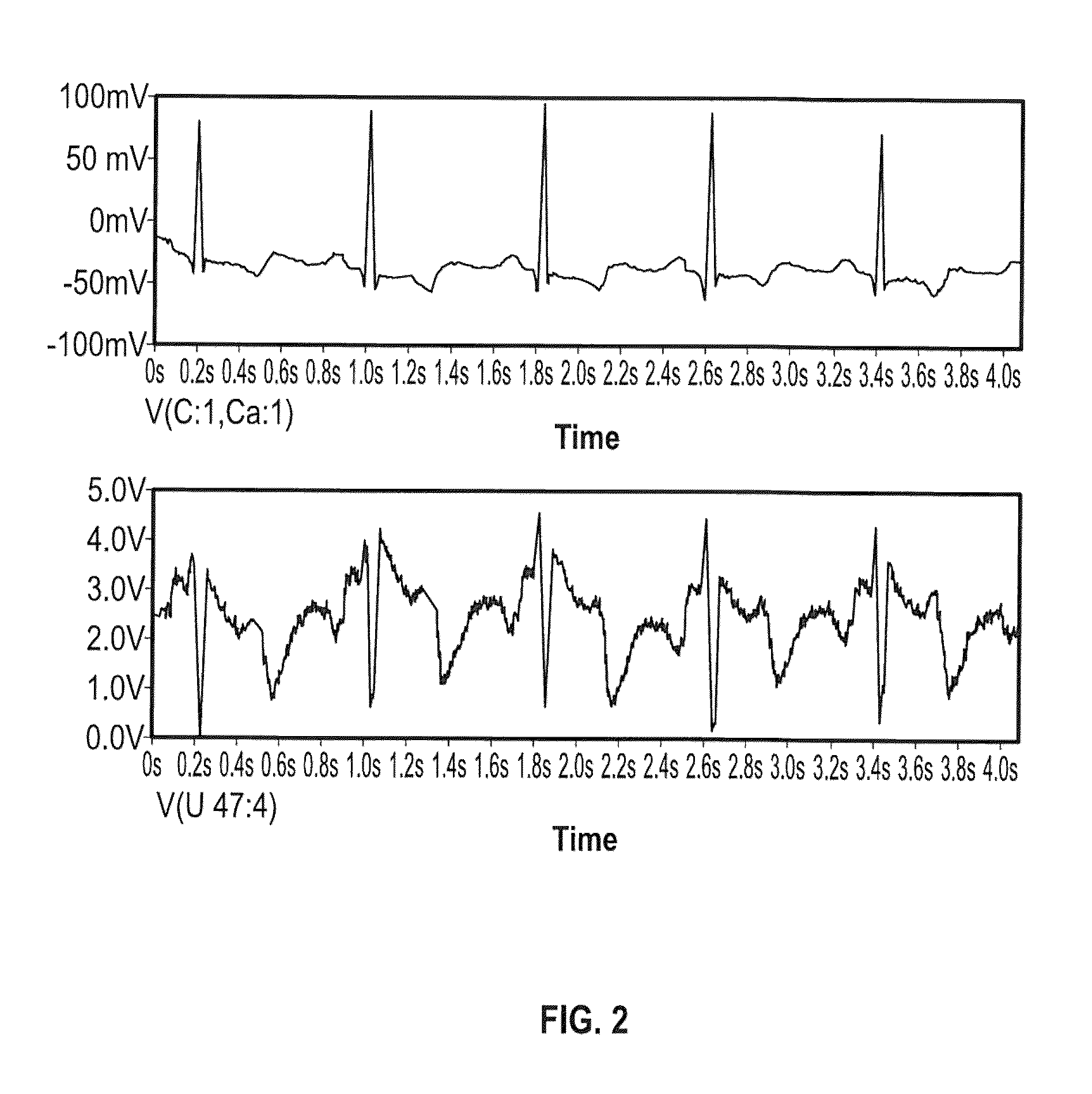Heart rate extraction using neural wavelet adaptive gain control and neural pattern processing
a neural wavelet adaptive gain control and heart rate technology, applied in the field of heart rate monitors, can solve the problems of requiring amplification, affecting the accuracy of heart rate signals, and easy saturation of amplifiers, so as to eliminate large noise components, avoid saturating the system, and eliminate noise components.
- Summary
- Abstract
- Description
- Claims
- Application Information
AI Technical Summary
Benefits of technology
Problems solved by technology
Method used
Image
Examples
example
Checking Admissibility Condition for Haar MRA:
[0108]Expression for Haar wavelet:
[0109]ψ^(ω)=sin2ω / 4ω / 4
[0110]Applying admissibility condition:
[0111]∫0∞ψ^(ω)2ⅆωω=∫0∞sin4(ω / 4)(ω / 4)2ⅆωω
[0112]The integral can be expressed as:
[0113]∫0∞=∫0∂+∫∂∞
[0114]For integral
[0115]∫0∂sin2λ / 4λ / 42ⅆλλ≤∫0∞λ / 42ⅆλλ=∫0∞λ16ⅆλ(∵sinλ≤λ)
[0116]which converges as ∂→0.
[0117]Also the integral
[0118]∫∂∞sin2λ / 4λ / 42ⅆλλ<∫∂∞16λ3
(∵ sin λ<1) therefore as ∂→∞ the integral converges.
[0119]Hence Haar wavelet satisfies admissibility condition.
Inverse Continuous Wavelet Transform (ICWT)
[0120]From Parseval theorem, to get inverse wavelet transform choose y(t) to be an unit area narrow pulse around t=t0 (or as impulse)
[0121]x(t0)=Kψ∫∫Wψx(b,a)ψ(t0-ba)ⅆbⅆaa2[0122]where again
[0123]Kψ=∫ψ^(λ)2ⅆλλ;[0124] a constant on the condition that
[0125]∫ψ^(ω)2ⅆωω[0126] converges i.e. ADMISSIBILITY CONDITION.
[0127]It is because of admissibility, that the CWT is invertible.
[0128]If spectrum of ψ(t) i.e. {cir...
PUM
 Login to View More
Login to View More Abstract
Description
Claims
Application Information
 Login to View More
Login to View More - R&D
- Intellectual Property
- Life Sciences
- Materials
- Tech Scout
- Unparalleled Data Quality
- Higher Quality Content
- 60% Fewer Hallucinations
Browse by: Latest US Patents, China's latest patents, Technical Efficacy Thesaurus, Application Domain, Technology Topic, Popular Technical Reports.
© 2025 PatSnap. All rights reserved.Legal|Privacy policy|Modern Slavery Act Transparency Statement|Sitemap|About US| Contact US: help@patsnap.com



